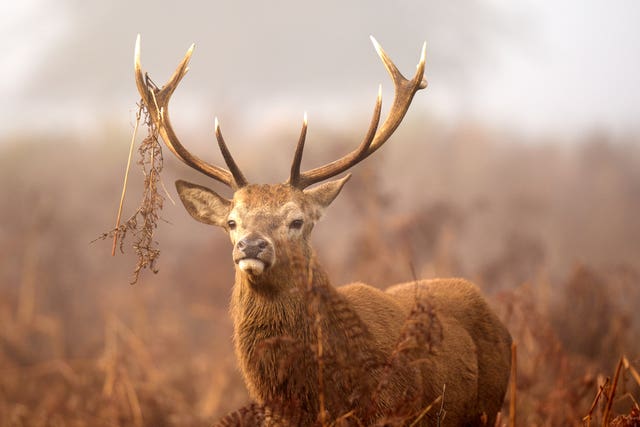Reintroducing wolves could expand woodland areas and reduce CO2 – study
Researchers acknowledged there may be controversy should wolves be reintroduced in Scotland, but they said the benefits must be considered.

Reintroducing wolves in the Scottish Highlands could lead to an expansion of native woodland which could take in and store one million tonnes of CO2 per year, environmental researchers have suggested.
A study led by researchers at the University of Leeds said reintroducing the species into the Cairngorms, south-west, north-west and central Highlands could help curb the problem of red deer eating tree saplings, which stops natural woodland regeneration.
The researchers estimate that if wolves were reintroduced, a population of around 167 of the animals would thrive, which they say is enough to reduce red deer populations to a level that would allow trees to regenerate naturally.

Research suggests this alone could contribute to around 5% of the carbon removal target for UK woodlands, roughly equivalent to one million tonnes.
The study estimates each wolf would lead to an annual carbon uptake capability of 6,080 tonnes of CO2, making each wolf worth around £154,000, using accepted current valuations of carbon.
The research, published on Monday in the Ecological Solutions and Evidence journal, marks the first time the impact reintroducing wolves would have on woodland expansion and carbon storage in the UK has been recorded.
Lead author Professor Dominick Spracklen, from the university’s School of Earth and Environment, said: “There is an increasing acknowledgement that the climate and biodiversity crises cannot be managed in isolation.
“We need to look at the potential role of natural processes such as the reintroduction of species to recover our degraded ecosystems and these in turn can deliver co-benefits for climate and nature recovery.”
The exact year is unclear, but it is widely accepted that wolves were officially eradicated from Scotland around 250 years ago.
This left red deer with no natural predators, and while efforts have been made to keep their population under control, their numbers have increased over the last 100 years to an estimated 400,000 today in Scotland alone.
The researchers said only 4% of Scotland is covered by woodland today, making it one of the least forested places in Europe.
The wolf population in western Europe currently sits at around 12,000, occupying 67% of their former territory.
The researchers have said they expect some controversy to follow their research, particularly from farmers concerned about livestock and deer stalkers.
But they say despite fears, the benefits must be considered.
Lee Schofield, a co-author of the study, said: “Our aim is to provide new information to inform ongoing and future discussions about the possibility of wolf reintroductions both in the UK and elsewhere.
“We recognise that substantial and wide-ranging stakeholder and public engagement would clearly be essential before any wolf reintroduction could be considered.
“Human-wildlife conflicts involving carnivores are common and must be addressed through public policies that account for people’s attitudes for a reintroduction to be successful.”





